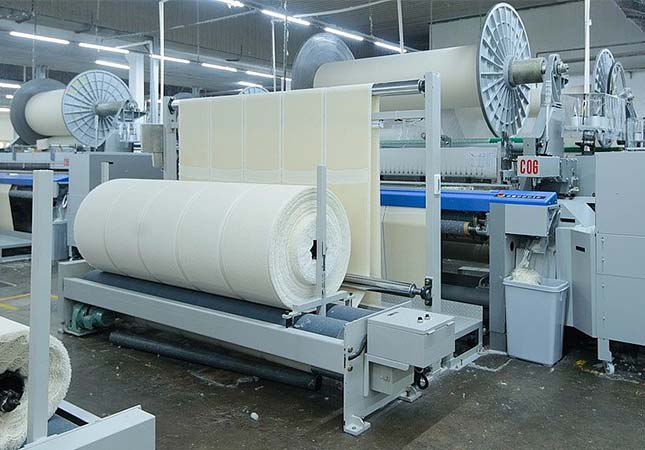The traditional methods of spinning and weaving have a history of more than 6000 years. Even today, the textile machinery designed based on traditional principles remains the primary equipment in the world's textile industry. However, since the 1950s, some new processing methods have been developed, partially replacing traditional techniques, to produce textiles with significantly higher efficiency, such as rotor spinning and nonwoven fabrics. These new processing methods have given rise to novel textile equipment, and the maturity and promotion of these new textile machines further drive the advancement of the textile industry.

Textile machinery is characterized by its strong process-oriented nature, complex structure, and multitude of parts, all of which require pre-assembly or partial assembly before leaving the factory. Subsequently, production tests or partial production trials are conducted to ensure that the machine's quality meets the required standards. Textile machinery factories all have well-equipped testing departments.
The variety of parts in textile machinery is extensive, for instance, double-cylinder circular knitting machine parts can reach 1200 to 1500 types, involving multiple and diverse processing procedures. If a factory produces multiple types of machines simultaneously, it necessitates a well-planned production schedule and seamless coordination of parts to ensure the timely availability of the required variety and quantity of components for the final machine assembly on the production line. Modern textile machinery businesses adopt new management approaches and methods such as computers and systems engineering to manage their enterprises.
The weaving machinery industry is impacted by uncertain factors such as tense international trade situations and domestic policy adjustments. Despite the ongoing process of domestic industry transfer and upgrading, investor confidence has decreased, leading to a slowdown in the growth of weaving machinery sales. In 2019, rapier loom production and sales experienced a significant decline, dropping by 25.4% compared to the previous year. Jet loom sales amounted to 17,000 units, showing a decrease of 2% year-on-year. Water jet loom sales reached 75,000 units, representing a 13.6% increase compared to the previous year, but with a slower growth rate.
Data reveals that in 2020, Titan Corporation's total assets amounted to 1,485,029.2 million yuan, experiencing an increase of 2,904,978 million yuan compared to 2019, reflecting a 24.32% year-on-year growth. Its net assets reached 825,928.9 million yuan, showing an increase of 621,965 million yuan compared to 2019, with a growth rate of 8.14%. In the same year, Titan Corporation's operating revenue was 667,778.4 million yuan, indicating an increase of 847,288 million yuan compared to 2019, resulting in a 14.53% year-on-year growth. Operating costs amounted to 617,922.1 million yuan, reflecting a growth of 989,429 million yuan compared to 2019, with a growth rate of 19.06%. In 2020, Titan Corporation's net profit attributable to the parent company was 59,890.4 million yuan, experiencing an increase of 486,100 million yuan compared to 2019, resulting in a 0.82% year-on-year growth. Earnings per share amounted to 0.37 yuan.
From January to November 2021, the operating income of China's large-scale textile machinery enterprises reached 83.204 billion yuan, a year-on-year increase of 30.35%. The total profit of large-scale textile machinery enterprises was 6.385 billion yuan, a year-on-year increase of 45.17%. However, compared to the international advanced level, there is still a significant gap, mainly reflected in the areas of independent innovation capability, specialized and supporting parts production level, integration of "two-industrialization," and the application of integrated, modular, automated, and informatized design and manufacturing in textile machinery.
After decades of development, China's textile machinery industry has made great progress. However, compared to world advanced technology, there are still certain gaps and some serious issues. The overall technical level of textile machinery is low, and there is weak capability in independent development and innovation, with insufficient investment in research and development funds. The intensity of enterprise technological transformation is insufficient, and manufacturing technology lags behind. Domestic basic industries are weak, and the basic supporting parts cannot keep up, affecting the quality of textile machinery products and the level of electromechanical integration. The development of textile machinery products lacks organic coordination with processes, affecting the usability of the products. The lack of matching policies has also affected the competitiveness of domestically produced textile machinery products. In response to these issues, the Chinese textile machinery industry has taken a series of measures, vigorously developing the infrastructure of textile machinery, introducing foreign textile machinery technology, adopting differentiated development strategies, and implementing policies to support the development of textile machinery, which has achieved good results.




